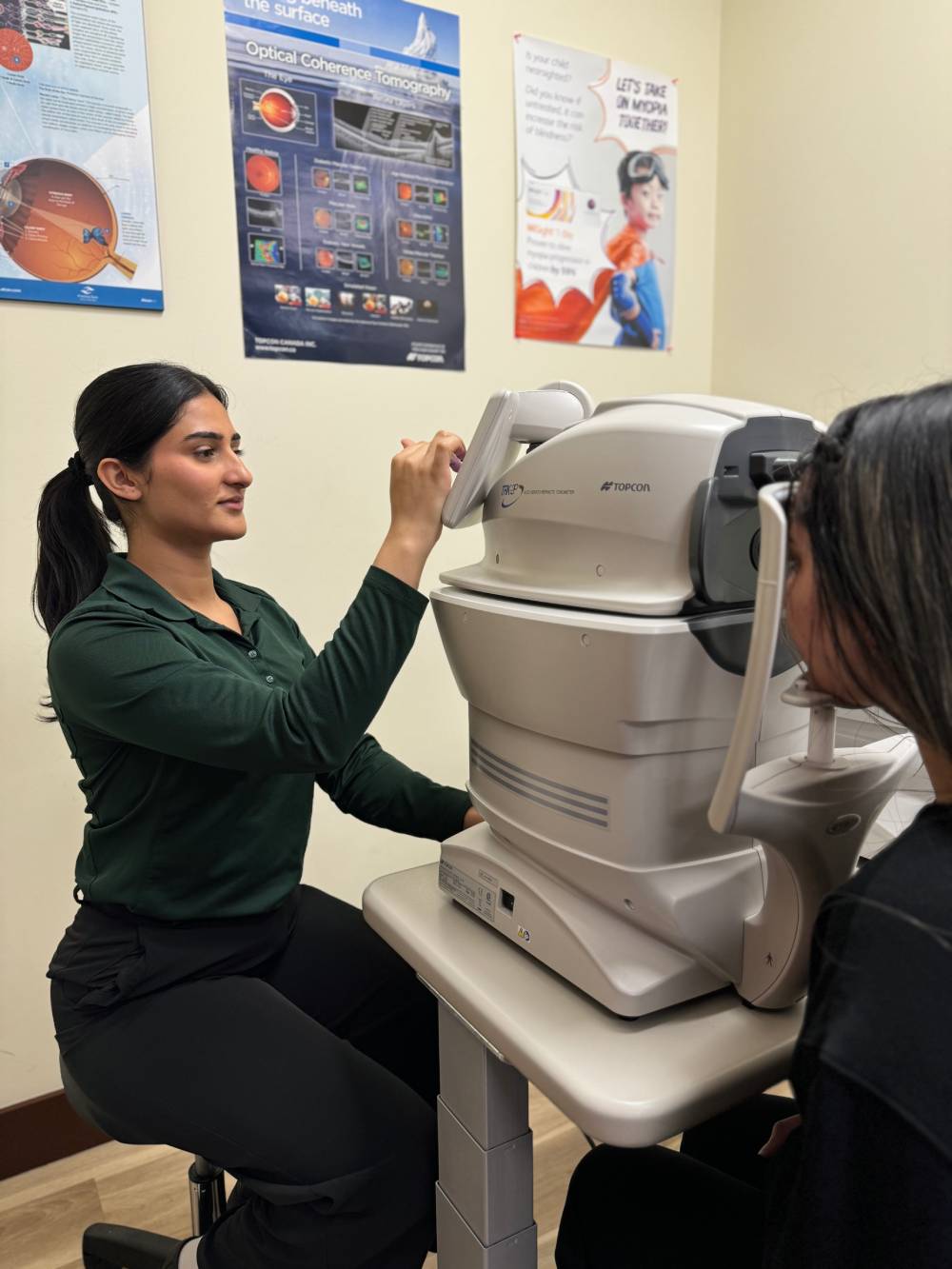Enjoy free shipping on all orders over $150 within Canada! Shop now and save.
Age Related Macular Degeneration Diagnosis and Management in Abbotsford

Eye diseases are conditions that affect the health and function of the eyes. They can cause vision loss, pain discomfort or other problems. They can be developed based on various factors like aging, genetics, injury, inflammation or other factors.
To prevent it, it is important to take care of your eyes and have regular eye exams to detect diseases early and get the appropriate treatment.
Remember, your eye exam is not just about vision check, your optometrist will also check for your eye health using various tests and devices. Your eyes deserve the best!


Age Related Macular Degeneration (ARMD)
Age Related Macular Degeneration is a common eye condition that affects the central vision. It occurs when the macula, the part of the retina that is responsible for sharp and detailed vision, becomes damaged due to aging or other factors. ARMD is more likely to affect older adults especially those over 60 years old.
Symptoms of ARMD:
In the earliest stages, macular degeneration is entirely symptoms free but can be detected during routine eye health examinations. Symptoms can vary depending on the type of AMD, but common symptoms include:
Blurred Vision: This can make it difficult to see fine details or to read.
Distorted Vision: Straight lines may appear wavy or distorted.
Dark or Empty Areas in vision: You may notice dark or empty areas in the center of the vision, which can make it difficult to see objects directly in front of you.
Decreased Color Vision: Color may appear less vibrant or faded.
Difficulty recognizing faces: ARMD makes it harder to recognize faces or facial expressions especially when looking directly at someone.
Increased sensitivity of glare: You may become more sensitive to light or glare.
Different types of ARMD:
Typically categorized into two main types:
Dry ARMD: It occurs when the light sensitive cells in the macula gradually break down and thin out, leading to gradual loss of vision. Dry ARMD progresses slowly over time. With lifestyle changes dietary supplements and regular eye exams can help slow its progression and manage symptoms.
Wet ARMD: It is responsible for the majority of severe vision loss associated with this disease. Wet AMD occurs when abnormal blood vessels grow beneath the retina and leak fluid or blood, leading to sudden and severe loss of central vision. Wet ARMD can progress rapidly and require prompt medical attention.
Age: ARMD is most common in individuals over the age of 50 and risk increases with age.
Family History: Family history of ARMD increases the risk of developing the condition.
Smoking: Smokers are at a higher risk of developing ARMD and it can also accelerate the progression of the disease.
Dietary Factors: Diet high in saturated fats, cholesterol, and processed food may increase the risk of AMD.
Light eye color: Light eye color has also been linked to increased risk of developing ARMD.

How can I prevent it?
If you smoke, quitting smoking can significantly reduce risk of developing AMD.
Maintain a healthy Diet: A diet rich in fruits, vegetables and omega-3 fatty acids may help reduce the risk of AMD.
Lifelong UV Protection: Wear sunglasses that block UV rays.
Exercise regularly: Engaging in regular physical activity can help promote overall health, including eye health.
Regular eye exams: Regular eye exams are also important in the early detection of AMD. Early signs of AMD may be found during eye examination even if no symptoms are noticed.
How do optometrists determine ARMD ?
Visual Acuity Test: This test measures how well you see at various distances. Decreased central vision may indicate the presence of ARMD.
Dilated Eye Exam: Our optometrist will use eye drops to dilate your eyes, allowing them to examine the back of the eye for any abnormalities.
Amsler Grid Test: Tool used to detect distortion or changes in central vision. You’ll be asked to focus on a central dot in the grid while covering one eye and lookout for any missing, distorted or wavy line which can indicate the presence of ARMD.
Fundus Photography: This imaging technology involves taking detailed photographs of the retina, including the macula.
OCT: OCT is a non-invasive test that provides detailed images of the retina, optic nerve which can detect any abnormalities such as fluid accumulation or thinning of the macular layer, associated with ARMD.
Age Related Macular Degeneration Diagnosis and Management in Abbotsford

Come Visit Us
Visit Us
Often overlooked, our eyes play a crucial role in our daily lives, offering us the gift of sight and insight into our surroundings.
Our Address
Unit 120, 1575 McCallum Road, Abbotsford , BC V2S 3N3


